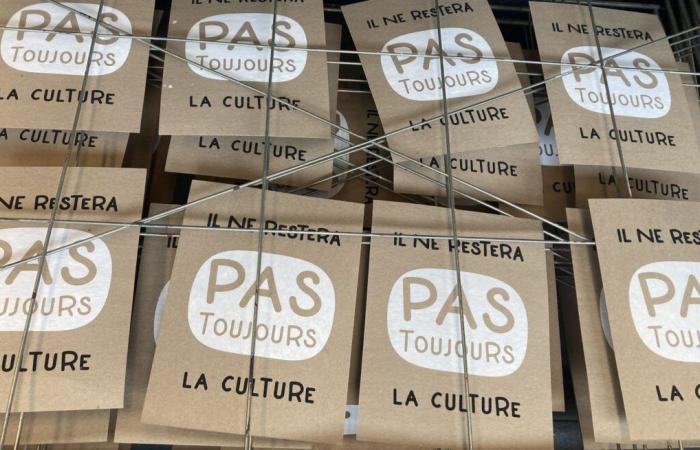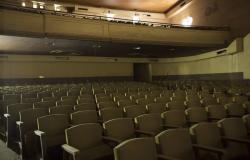There are more than 1,000 artists and workers in the visual and media arts, literature and magazines. They come from these practices which do not end on a stage and are part of the Great Mobilization for the Arts in Quebec (GMAQ). They signed, alongside Kev Lambert, Philémon Cimon, Alain Deneault, Raymonde April and Ines Talbi, a letter sent last week to the Minister of Culture. “We thought it was obvious that when we chanted ‘the arts are not doing well,’ we meant all the arts. It seems we were wrong,” they write, to counter their feeling of being invisible, and to bring the visual and literary arts back into discussions on the financing of culture.
“We, artists, are out of breath,” write the signatories of this letter titled Not all arts are alive. A missive written in direct reaction to the remarks made by Minister Lacombe to All one morningon ICI Première, on October 2.
The latter then named his priorities in financing culture: now that solutions have been provided for audiovisual production, festivals are in his sights. Then, said Mr. Lacombe, the emergency will be the financing of the performing arts. “Excluded from this sphere are the numerous practices where artists most often remain in the shadows of the workshop, studio or office,” deplore these “not living artists” of the GMAQ.
However, these artists suffer just as much from the lack of funding for the Conseil des arts et des lettres du Québec (CALQ) by the Legault government. Mr. Lacombe has regularly recalled in recent months that the funding, in dollars, of the CALQ has always increased, reaching, according to him, unparalleled investments.
However, underlines the GMAQ, in 2022-2023, in the “Creation” and “Research and exploration” programs, these two pillars of direct support for artists, only 27% of the grant applications submitted were accepted.
And in 2023-2024, according to data compiled by Duty, the success rate is still falling. It is 21% in the “Creation” program, and 22% in “Exploration and research”, according to data from the CALQ annual report. “Nearly three out of four requests are rejected,” analyzes the letter.
Applying for a scholarship requires enormous administrative work, recalls the GMAQ. A work “most often carried out in vain, as the figures show. In this context, many of us are wondering how we will be able to pursue a serious artistic practice.”
Edith Brunette, one of the instigators of this collective letter, is personally experiencing this drop in the acceptance rate of requests made to the CALQ, which has been taking shape since the pandemic, according to her.
A professional artist for a dozen years, Mme Brunette’s fields of action are performance, video, writing and intervention. “Between 2010 and the pandemic, I obtained roughly 50% of the requests I submitted. I don’t do it every year, it depends on the projects I carry out. »
“There, for the last two years, there has been 0% acceptance…” assesses the woman who works half her time on her artistic practice, and earns income of around $5,000 per year.
Runoff or elevation
Since the Common Front for the Arts demonstrations, performing arts groups and the office of the Minister of Culture have reported having a frank and ongoing dialogue together, and regular conversations to seek solutions.
By taking up the pen, the “not alive” artists also wish to be one. They remind us of the solidarity that exists between the arts. The actions to be taken to repair the system must not be thought of in isolation, or by discipline or sector of activity, they say. They also want to ensure that “public money invested in arts and culture reaches the artists.”
In fact, the ministry’s response to last spring’s demands only brought, according to them, a slight temporary increase in the budget of the organization support program.
Organizations that exist for and thanks to artists. “We could hardly pursue our projects without them: conversely, they would have no reason to exist without us,” summarizes the group.
The director of the Verticale artist center, Charlotte Panaccio-Letendre, wholeheartedly agrees. She becomes emotional when she speaks of the codependence of all those involved in the arts, of the ecosystem that artists and presenters form.
“It is imperative for us, at Verticale, to increase artists’ fees. We want to follow the professional scales of the Canadian Artists Front. »
An artist who exhibits at Verticale receives, for his 2024-2025 exhibition rights, around $2,400. “These are neither fees nor a salary, but royalties for broadcasting. » Too often, explains Mme Panaccio-Letendre, these artists did not have grants for the creation or production of the work, and financed them from their own pockets.
“Artists certainly live modestly, but must eat, house, care for themselves and take care of their family like everyone else,” adds the GMAQ.
“Affirming the right of artists to live decently is also a reminder that being a society requires care and solidarity, and that tolerating and endorsing a culture of poverty, for any group whatsoever, is inexcusable. »
Pay for future rejections
Sara A. Tremblay, 41 years old, does photography, intervention, live performance, drawing, video. Professional since 2006, she has managed to make a living from her art, “but always through the band,” she explains.
“I am not an example: I make as few requests as possible to the CALQ. » For her, it’s too difficult: “Filling out a labyrinthine questionnaire, describing a project that doesn’t yet exist and the materials I’m going to use to do it, that blocks me. »
“So when I apply for scholarships, I hire someone to fill them out for me. Someone I pay to make requests that will likely be denied. »
Currently, Mme Tremblay has four jobs: in a restaurant, in teaching, as an artist with his successful projects… and with the GMAQ, “because I am one of the artists who think it is essential to be seen, heard, respected and supported , and that I want things to change.”
The letter directly challenges the minister on parallel funding avenues: “As you already know, the Quebec cultural market is too small for us to seriously consider the private sector coming to compensate for the current lack of public support,” write the signatories.
They conclude: “We, artists and art workers, therefore demand a substantial and permanent increase in the CALQ budget, while reaffirming the need for its political autonomy. »
On Sunday morning, the signatories of Not all arts are alive indicated that they had been contacted by the cabinet during the weekend to organize a meeting with the minister.






